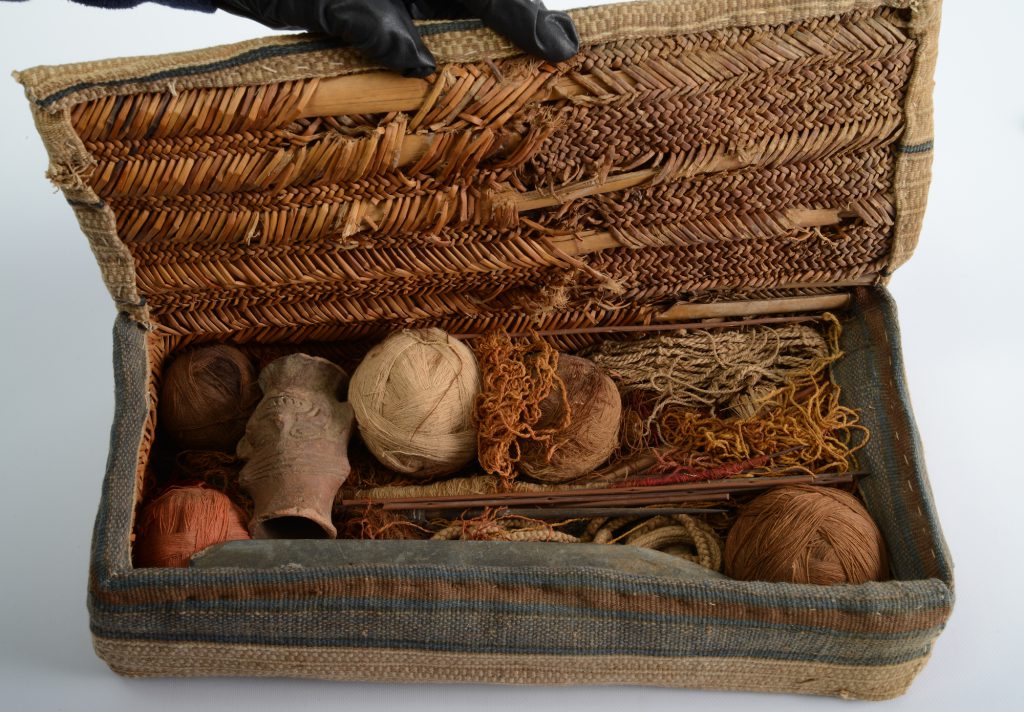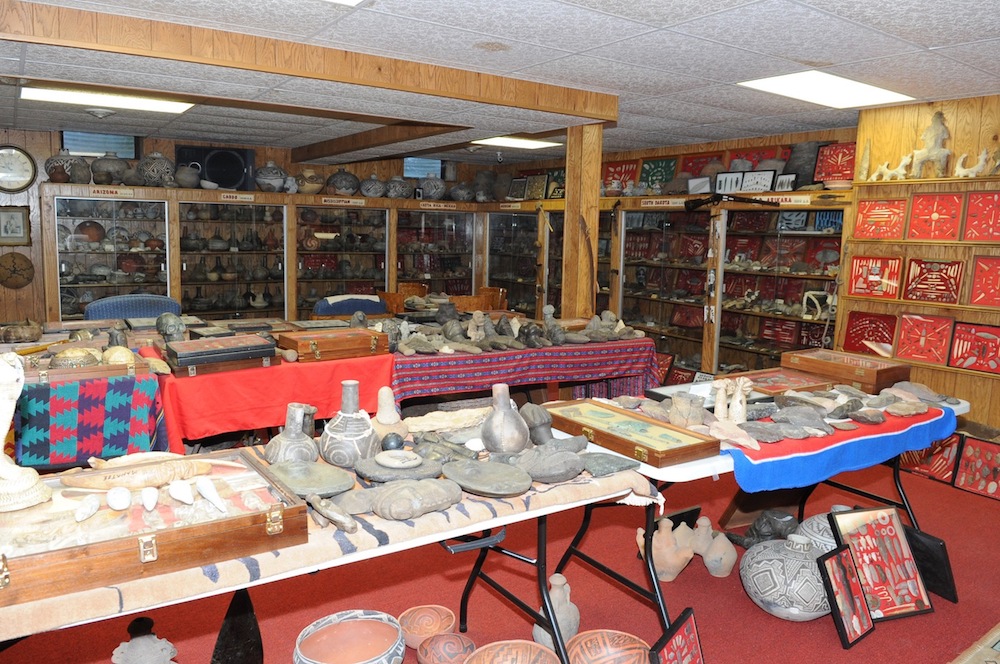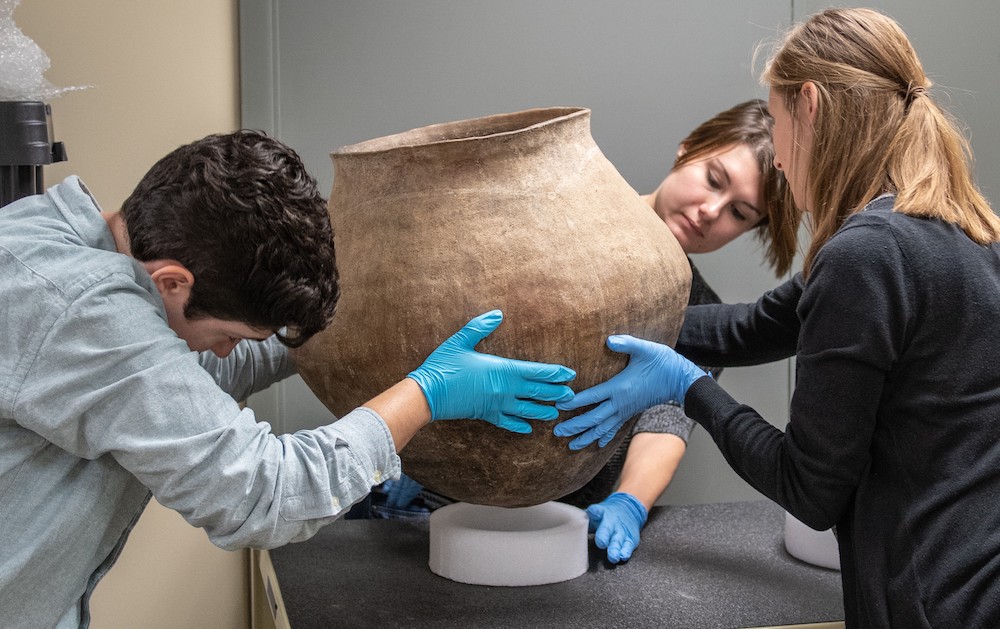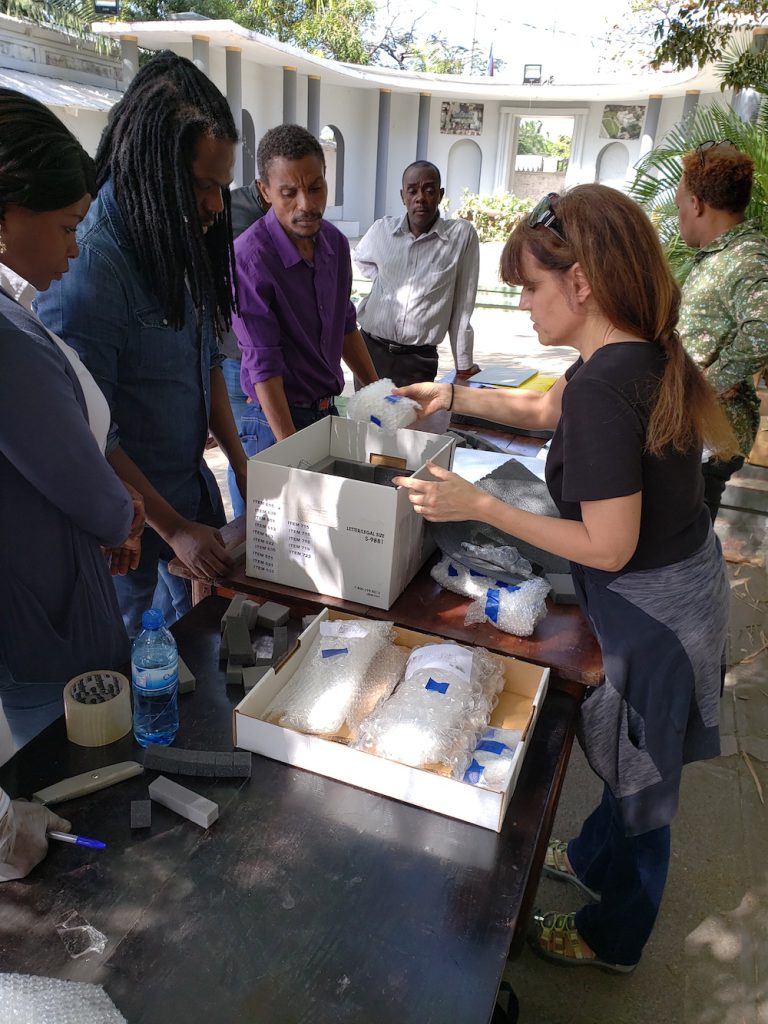The FBI’s Repatriation of Stolen Heritage

The first day of April, in 2014, dawned “gray, cold, rainy, ugly,” recalls Supervisory Special Agent Tim Carpenter of the FBI’s Art Theft Program in Washington, D.C. Early that morning, his team knocked on the door of Don Miller’s farmhouse in Waldron, Indiana.
Part of that team was cultural anthropologist Holly Cusack-McVeigh, who remembers being so nervous that she hadn’t slept the night before. Though she had experienced many human cultures, law enforcement was new. “This was way beyond my comfort zone,” she says.
A tip to the FBI had brought Carpenter and Cusack-McVeigh to Miller’s door. According to the tipster, Miller had an extensive trove of illegally looted cultural objects, along with some human remains. In preparation for what Carpenter suspected would be a massive seizure of cultural property, he had asked Cusack-McVeigh, based at the nearby Indiana University–Purdue University Indianapolis, to assist with the operation.
But this was no predawn raid led by armored agents with guns drawn. The team took care to respect Miller—who was surprised but cooperative—and his home. They sat down for an hourslong discussion with the collector before they began to empty the farmhouse of objects.
Miller, who passed away in 2015 at the age of 91, was an electrical engineer, amateur adventurer, and avid collector. He told the Indianapolis Star in 1998 that he’d been interested in collecting cultural objects since childhood, when he’d search the family farm for arrowheads. He’d traveled the globe, gathering items that he regularly showed off to visitors.
The trouble was that many—though not necessarily all—of his treasures had been obtained illegally, as Miller eventually admitted. For example, he brought home a set of mammoth tusks from Canada decades ago, which Carpenter says was likely an illegal collection and transport.
Those tusks were far from the only objects of interest. Miller possessed Ming dynasty jade, a Roman mosaic, and many more bones than the team anticipated—remains from approximately 500 individuals. The FBI operation uncovered approximately 42,000 objects stored in his basement, outbuildings on the farm, and elsewhere.
“It was all throughout the house,” Carpenter says. “Artifacts in every nook, cranny, drawer, cabinet, on the floor.” In navigating the narrow basement walkways, with every step he risked knocking over some priceless object.
All told, after studying Miller’s collection and records, the FBI took possession of roughly 7,000 items—one-sixth of Miller’s full collection—for which they had strong evidence of illegality under a variety of statutes. It was the largest recovery of cultural property in the FBI’s history.
A typical seizure by the FBI Art Theft Program, Carpenter notes, ranges from a few objects to perhaps 2,000 items. “While we have no way of knowing how many large private collections exist, we have seen, and expect to continue to see, more and more of them coming to light as collectors pass away and the collections are inherited by younger generations who will contact the FBI and law enforcement for guidance,” he says.
The scale of this FBI repatriation effort offers a unique window into the challenges and rewards of this process. In the months following that gray April day in 2014, Miller came to support the restitution of these cultural objects and remains to their home communities; no one filed charges or lawsuits against him by the time of his death.
Meanwhile, the team has returned many sets of remains and objects from Miller’s collection, and hopes to wrap up its work within the next few years. The homelands of these items and remains have included countries such as China, Colombia, and New Zealand, and a number of Indigenous communities within North America. “The goal is to get everything, and everyone, home as quickly as possible,” Cusack-McVeigh says.
The seizure on Miller’s farm took six days, with many participants working double shifts. A team of more than 100 people, including Cusack-McVeigh, her students, and representatives of local Native American tribes, participated in the recovery.
Working in tents in the yard, they registered, photographed, and packed cultural objects, which were then sent to a secure location. Torrential rains hit mid-week, turning the yard into “a giant mud pit,” Carpenter says. The FBI later paid to restore Miller’s landscaping.
But after decamping from the yard, Cusack-McVeigh’s detective work was just getting started. Since then, she’s led the effort to care for, identify, and, where possible, return the amassed objects and remains. “It’s a very slow and tedious process,” Cusack-McVeigh says.
They stored the cache seized from Miller’s home at an undisclosed location near Indianapolis with controlled temperature and humidity, as well as security and pest control. The FBI built a website with images of cultural objects—but did not do so for remains or sacred items, since many cultures forbid such imagery. The group then began reaching out to representatives of various communities for help in identifying the objects and returning them.
Finding the right tribe or locale for human remains has presented additional challenges. Miller’s records suggest that the majority of the remains were of individuals who were Native American, prompting Cusack-McVeigh and the FBI to reach out to all federally recognized tribes.
At the request of the tribes involved in the project, there has been no invasive testing, such as DNA analysis, to try to determine the origins of the deceased. However, some remains offer other clues to their histories. For example, anthropologists might be able to match a culture to jewelry found with remains. Osteologists (bone experts) analyzed skulls for any hints to their origins. And Miller’s travel records also provide insight.
Cusack-McVeigh is well-suited to lead this detective work. Her experience working with tribes and remains began in middle school, when she stumbled onto an exposed burial ground in Canada while staying at her family’s summer cottage. She then helped an archaeologist and local tribes gather and rebury the remains.
When she became an anthropologist herself in 1993, her commitment to that cause continued. In 1990, the Native American Graves Protection and Repatriation Act (NAGPRA) made it illegal to trade in Native remains or significant cultural objects, and required federal and federally funded institutions to repatriate such remains. Prior to joining the FBI repatriation effort, Cusack-McVeigh had mostly participated in the process as a volunteer consultant for tribes and Indigenous communities, helping them request returns.
All told, the FBI took possession of 7,000 items—the largest seizure of cultural property in the bureau’s history.
Miller is far from the only person to hold human remains and illegal objects in his home, Cusack-McVeigh notes. In the past, she says, it was relatively easy to walk off an archaeological site with an unsanctioned souvenir such as a cultural object: “They just got packed up like your toothbrush and your hairbrush.”
Cusack-McVeigh believes that, even with new laws, serious problems persist. “Grave robbing is still happening,” she says. “People still have human remains in private collections.”
Nonetheless, Cusack-McVeigh describes the Miller collection as striking for its size, diversity of origins, and the “deplorable” storage condition of human remains. “They were mixed in ways that would sadden most human beings,” she recalls.
Receiving repatriations has both cultural and spiritual significance, says Dorene Red Cloud, the assistant curator of Native American Art at the Eiteljorg Museum in Indianapolis. “When someone’s ancestral remains are not at home, and they’re not at rest, that causes a disruption in the spirit, and that affects people,” says Red Cloud, a member of the Oglala Sioux Tribe.
Even items that seem utilitarian, such as fragments of pottery, may be meaningful to the descendants of its owner, she adds. For example, such possessions might have been buried with an individual for use in the afterworld.
The first repatriation from Miller’s collection happened in 2016 in South Dakota when the FBI returned the remains of about a dozen individuals to multiple tribes. Cusack-McVeigh stood graveside during the burial, thinking, “They’re finally home.”
Among his travels, Miller performed Christian missionary work in Haiti and other locales. His Haitian collection gave Cusack-McVeigh a series of sleepless nights in February. Four large shipping crates, loaded with 5,000 pounds’ worth of objects, were en route from Indianapolis to Miami to Port-au-Prince, Haiti. When Cusack-McVeigh saw this cargo unwrapped at last at the Haitian Bureau of Ethnology Museum, she breathed a sigh of relief. The 480 objects had arrived safely.
These returns were particularly important because they included many objects that predated the arrival of Christopher Columbus, says Joseph Sony Jean, a Haitian archaeologist and postdoctoral researcher at the Royal Netherlands Institute of Southeast Asian and Caribbean Studies in Leiden. “There are a lot of people who thought that the history of Haiti started in 1492,” he says.
In fact, people have inhabited the island where modern-day Haiti lies for at least 6,000 years. Columbus arrived to find an organized Indigenous culture. “It is important to use these objects in Haiti, now, to have a better understanding of the deep history of Haiti,” Jean says.
The collection included a wooden duho, or ceremonial seat, and several axes. Cusack-McVeigh says it’s the smaller, less flashy objects that touch her the most. She noticed two necklaces of handmade clay beads. “I think about the individuals who made and wore these pieces,” she says, “because they’re personal.”
The unwrapping was a poignant scene, says Carpenter, who felt gratified to see the objects returned to their rightful owners. “There was a whole lot of smiling, and hugging of artifacts, and kissing of artifacts,” he says. “It was just emotionally profound.”




































